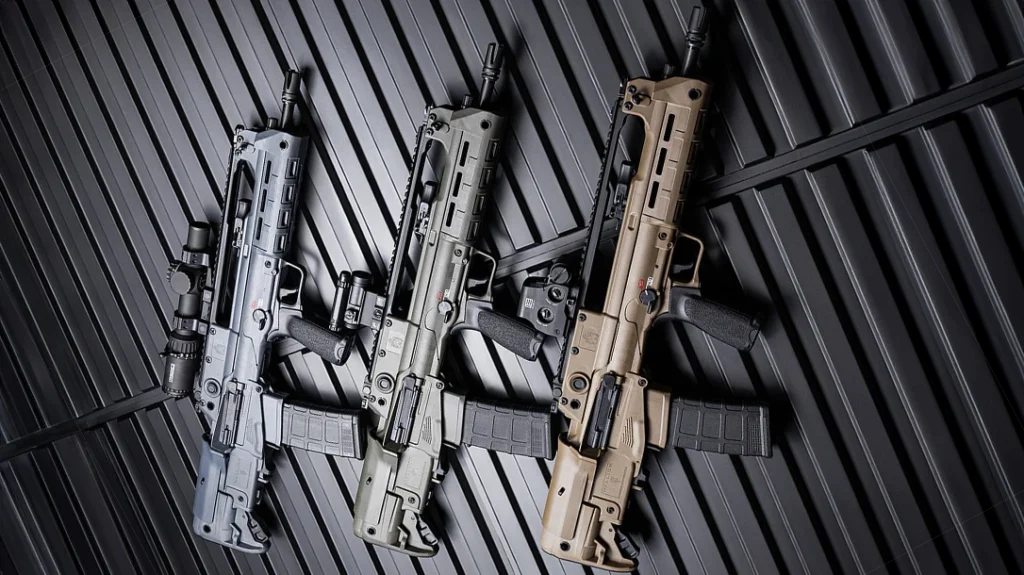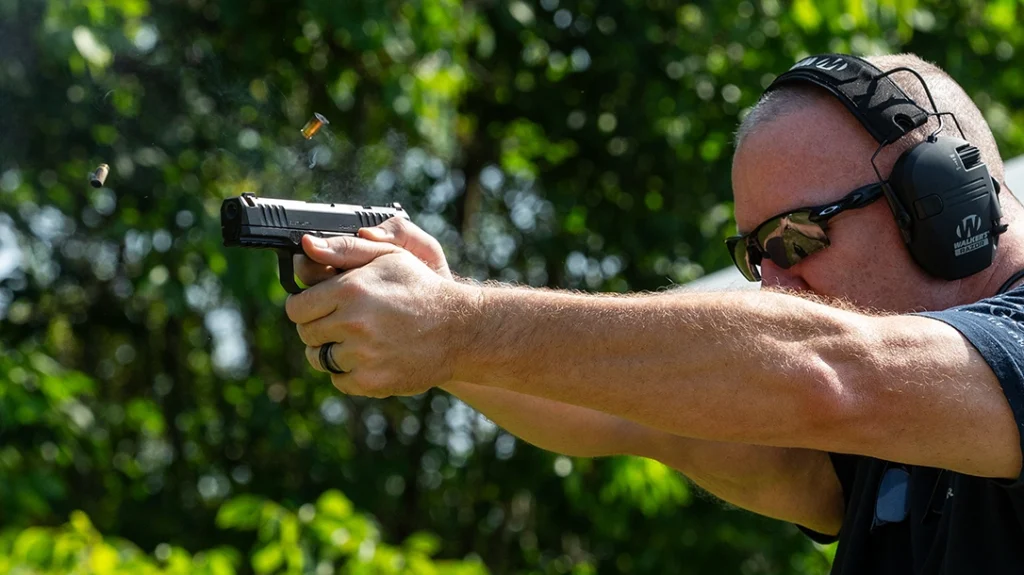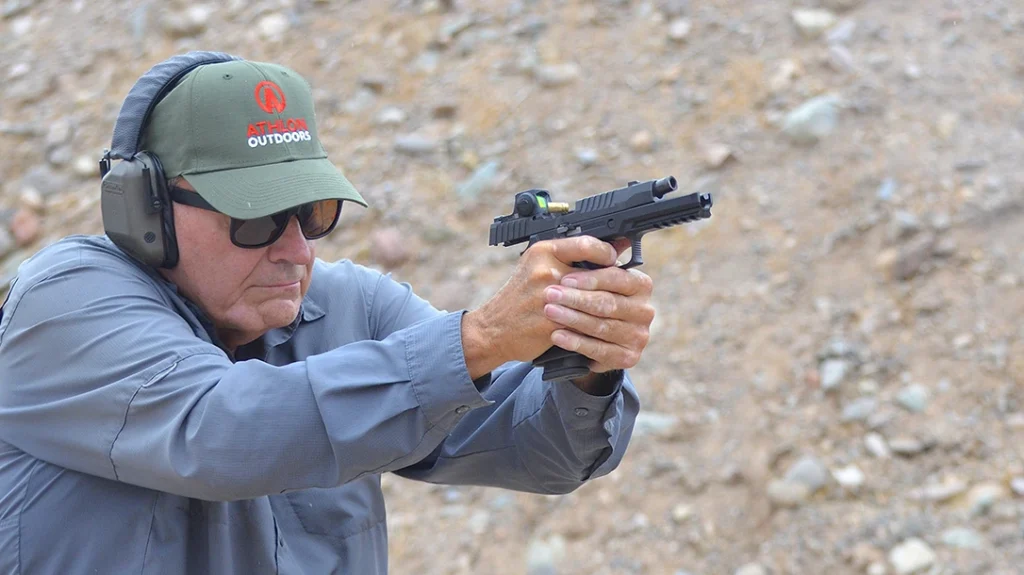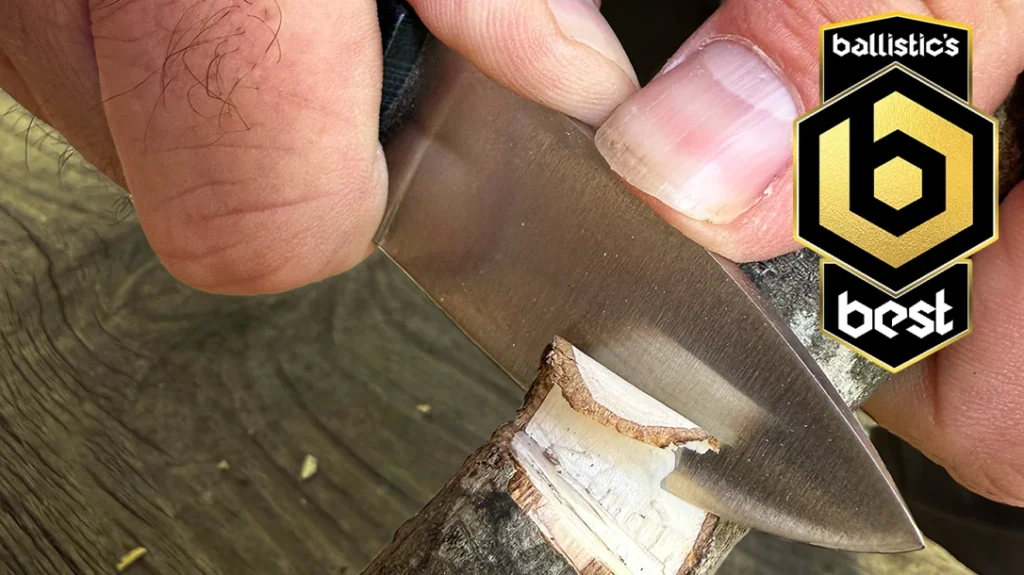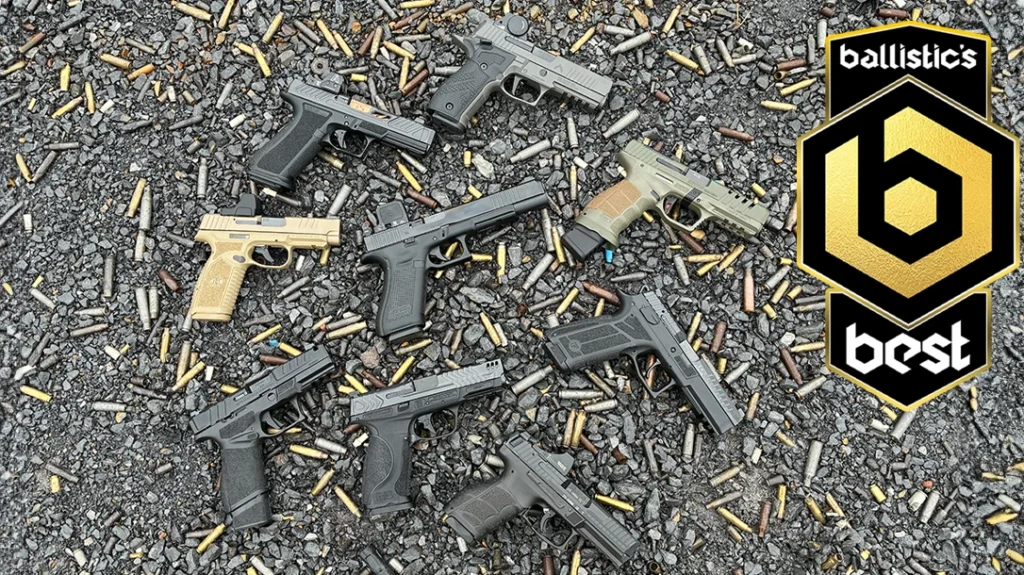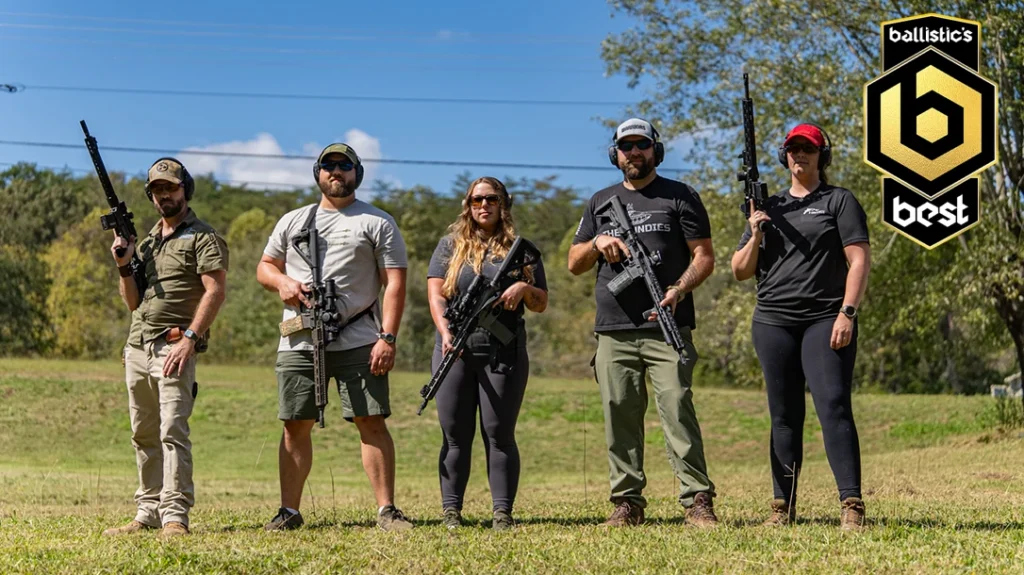Suppose John Browning had lived another 100 years. What would the 1911 pistol look like as it evolved from a military sidearm to a modern concealed-carry handgun? I’m guessing that it might look very much like the Wilson Combat SFX9 Comp. While we lost John Browning in 1926, Bill Wilson, owner, and founder of Wilson Combat, picked up where he left off.
The Wilson Combat SFX9 Comp
Using modern CNC manufacturing and alloys that Browning had never heard of, Wilson devised a shorter, lighter, higher-capacity pistol that is, at its heart, a 1911. Best of all, it retains the crisp, short-reset 1911 trigger.
It wasn’t just a matter of lopping off an inch or two at the muzzle and grip frame. The WC SFX9 Comp is a nearly complete reengineering of the 1911. Hammer, sear, disconnector, and thumb safety aside, Bill Wilson made some significant changes to the JM Browning design.
Advertisement — Continue Reading Below
Introducing the Wilson Combat Comp Barrel Upgrade
Wilson Combat recently introduced a compensated barrel for the SFX9 pistol. Complete guns with this barrel and compensator are available as an option when customers place their order for an SFX9 or as an upgrade for existing pistols. My test and evaluation pistol came with the comp barrel, optics-cut slide, and Trijicon RMR red dot.
Let’s start with the SFX9’s (SF= Solid Frame) frame. To make the gun comfortable for all-day concealed carry, Wilson machines the frame from a billet of tough T6-7075 aluminum that will hold up to a lifetime of use—even with +P ammo!
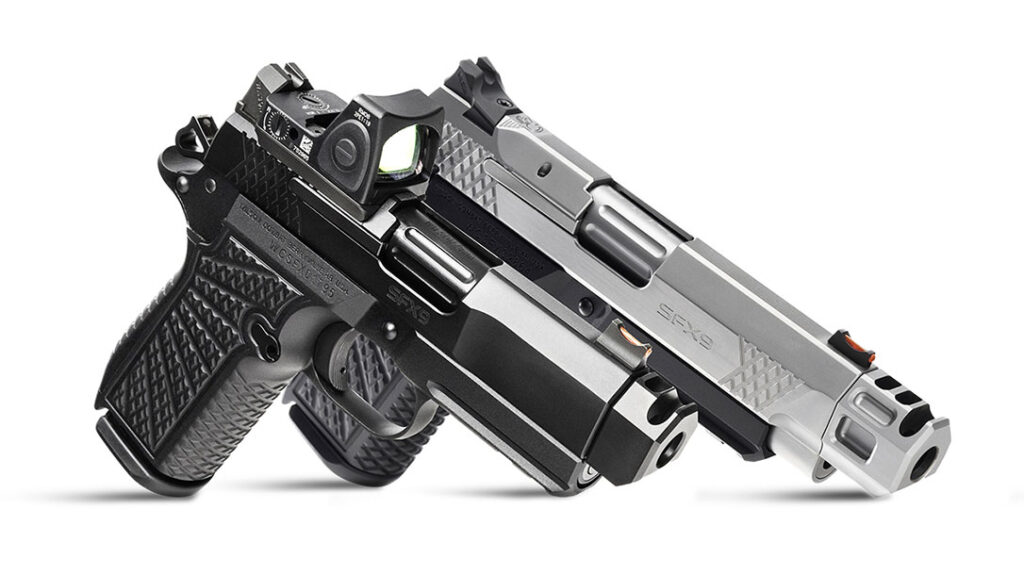
Advertisement — Continue Reading Below
Functionally Comfortable Pistol
Great efforts were made to make the SFX9 ergonomically superior. Case in point is the gun’s beavertail. Note that I did not say beavertail grip safety.
Wilson dispensed with this 1911 design feature on the SFX9, eliminating the worry that a high-thumb grip won’t disengage the safety. The company also undercuts the grip frame where the trigger guard meets the front strap. This allows the shooter to get a higher hold on the pistol.
I love the graceful curve of the gun’s backstrap that gently funnels the hand into a higher grip, much like a 1911’s arched mainspring housing. Both the safety and the slide release are wider than issue but not obnoxiously so, like match guns. For carry use, I’d say they are both perfect.
Advertisement — Continue Reading Below
Wilson Combat textures the SFX9 with its signature X-Tac tread pattern. It’s deep enough for the shooter’s flesh to press into for a secure grip but not coarse or abrasive enough to cause discomfort or for covering garments to hang up on, like sharp checkering. Black Armor-Tuff finish is applied to the frame instead of anodizing, and I like the satin feel of it.
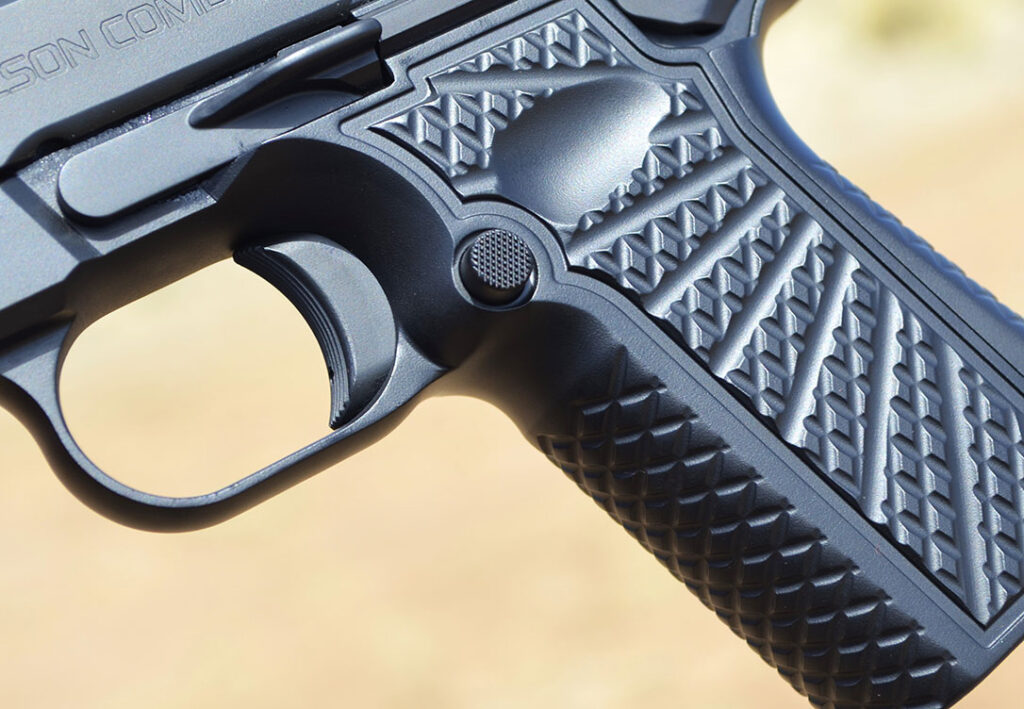
Getting an abbreviated barrel to run 100% with the 1911 platform can sometimes be a difficult chore. Wilson Combat uses the Enhanced Reliability System (ERS) on the SFX9. A combination of modifications is performed, all with the goal of providing reliability with under and overpowered 9mm ammunition.
Advertisement — Continue Reading Below
An external extractor is used to give the gun more consistent extraction. In addition, WC’s extractor gives it more purchase on the case rim than any other 1911 9mm I have examined.
A Short and Sweet 1911
WC hand fits a stainless-steel 3.25-inch match-grade barrel. You’ll note the barrel hood and tube are fluted. These flutes give dirt and debris a place to go rather than tie up the gun and, of course, give it a dramatic aesthetic flare.
The barrel retains the 1911-style swinging link lock-up but has just one lug on top to lock into the slide. No bushing is used on the cone-shaped barrel, and the fully supported barrel has an integral feed ramp.
Advertisement — Continue Reading Below
The compact compensator features two ports with expansion chambers designed to mitigate muzzle rise. Wilson Combat’s sales literature says the comp gives the SFX9 Comp about 20% less muzzle flip. Based on my shooting, I’d say that is just about right.
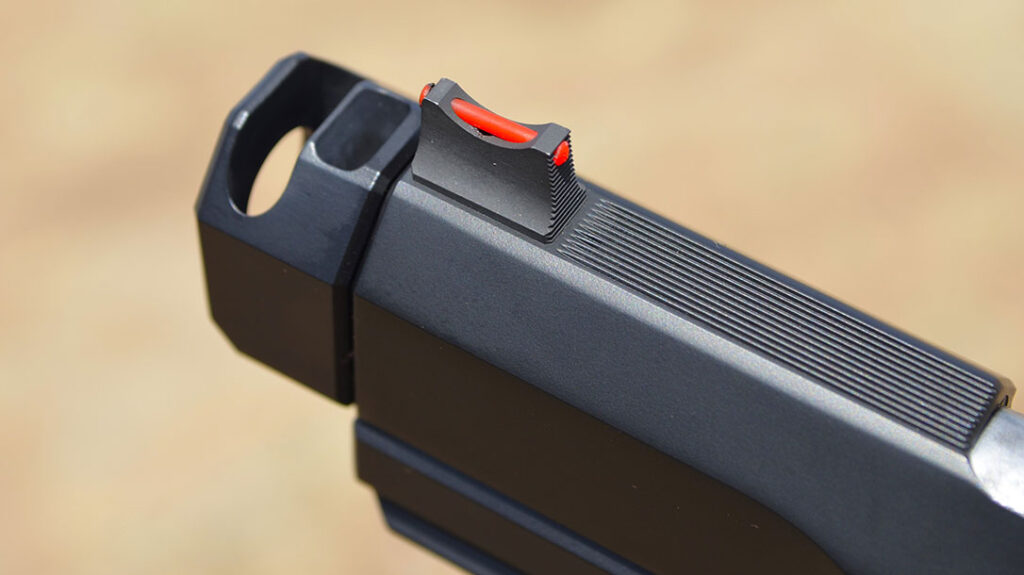
Less muzzle flip allows the shooter to drive the sights back on target quicker. In the case of my SFX9 Comp pistol, my primary sight is a Trijicon RMR red dot with a suppressor height, fiber optic, front sight, and rear sight that allows shooters to co-witness iron sights with the dot.
Advertisement — Continue Reading Below
The SFX9 uses a twin recoil spring setup. The larger spring is wrapped around a cap that rides over a smaller spring wrapped around the full-length recoil spring guide, so there is no spring-on-spring contact. Its bushingless design utilizes a reverse recoil spring plug.
Getting Triggered
One of the reasons competitors continue to use the 1911 is its crisp trigger. Wilson Combat’s trigger is what all 1911s should aspire to. There’s just enough take-up to safely prep the trigger and then it breaks with 2.25 pounds of pressure with all of the crispness of the proverbial glass rod. Its reset is firm and short, and this makes the gun capable of being fired very rapidly.
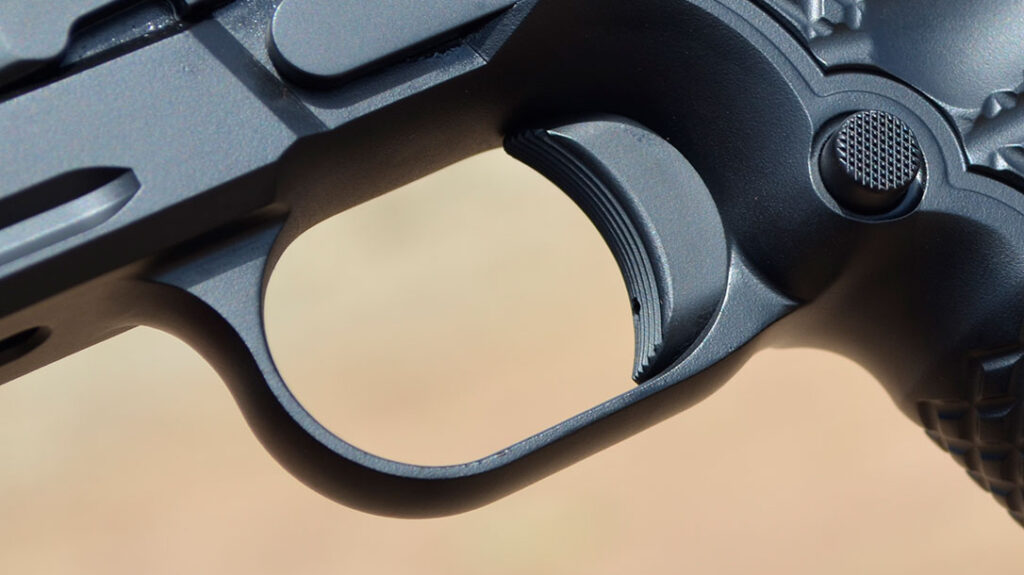
Advertisement — Continue Reading Below
Due to the gun’s short barrel length, I decided to test the gun for accuracy at 15 yards. All groups were fired from a seated rest with five rounds to a group. 3 groups were fired with each ammunition, and the very best group is reflected in the accuracy chart (below). I rested the gun’s light rail on a Ransom Rest Multi Cal Steady Rest for support.
My test sample came equipped with a Trijicon RMR Type 2 red dot optic. This sight has become one of my favorite slide-mounted optics because of its rugged design and easy-to-use brightness controls. It features a 3.25 MOA dot that is well-defined and small enough for precision work yet easily picked up on presentation.
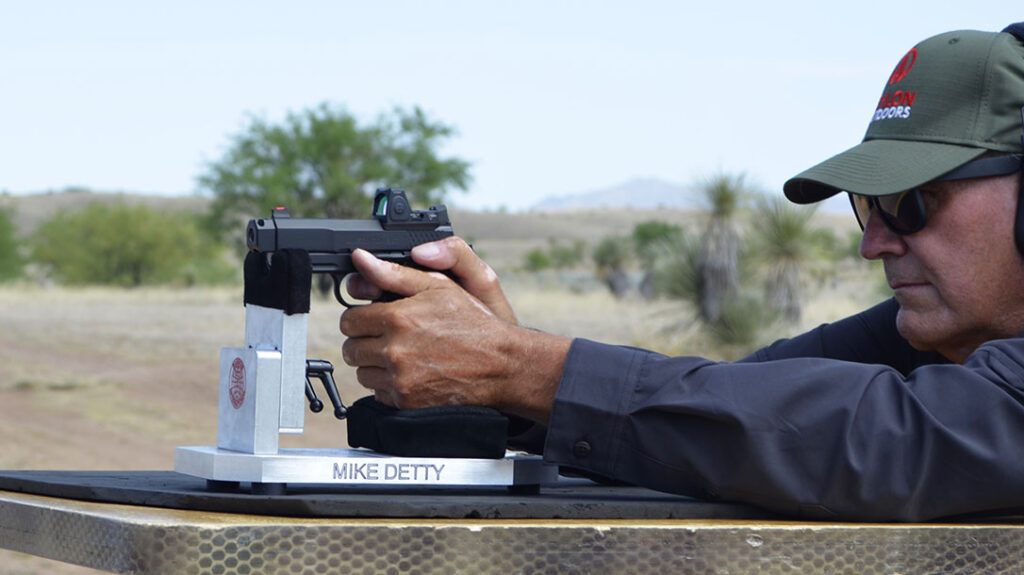
Advertisement — Continue Reading Below
I used 2-inch diameter Shoot N C targets, and at 15 yards, it was easy to center the red dot inside the black circle as I added the 36 ounces of pressure necessary to break the shot.
Feeding the SFX9 Comp
Wilson Combat’s 124-grain XTP Hollow Point +P High-Performance Tactical rounds provided the best accuracy, producing a group of just .68”. This load also generated the most energy of any of the Wilson Combat rounds I tried and would make an ideal carry load.
Wilson Combat’s 115-grain Tac-XP +P Optimized for Compacts also produced a great 5-round group measuring .82”. However, it had approximately 15% less energy than the 124-grain load.
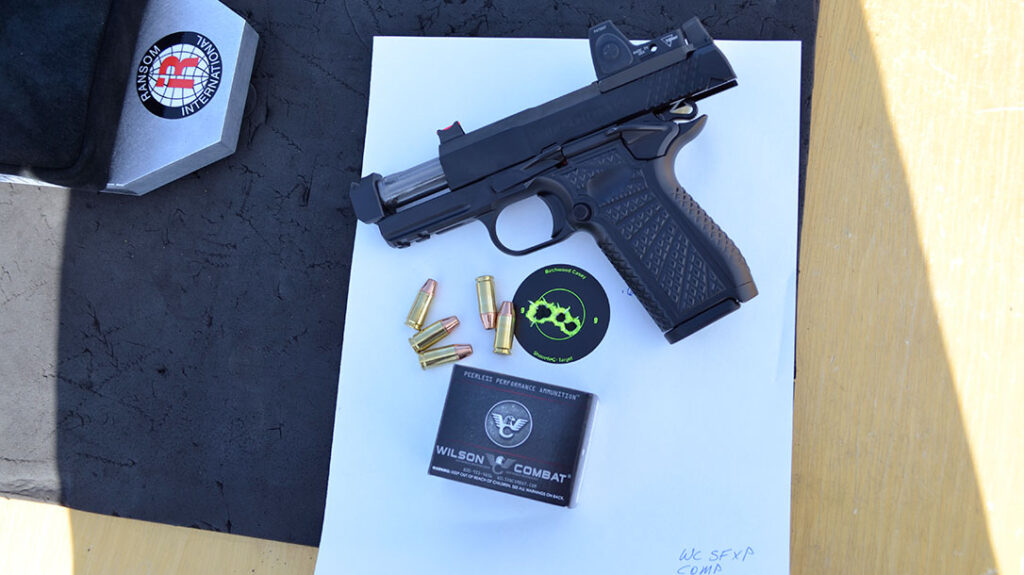
Recoil from the 124-grain +P load was by no means punishing. In fact, to me, it felt like an ordinary FMJ range load through the SFX9’s compensator, and it would be the logical carry load for this pistol.
I had the opportunity to fire the SFX9 Comp on steel targets set out at 15 and 20 yards. The Trijicon RMR made target-to-target transitions fast and easy, and my doubletaps were some of the fastest I have ever fired. Though the gun is lightweight and has a 3.25-inch slide and barrel, the grip is full-size, which gives the shooter a great deal of control.
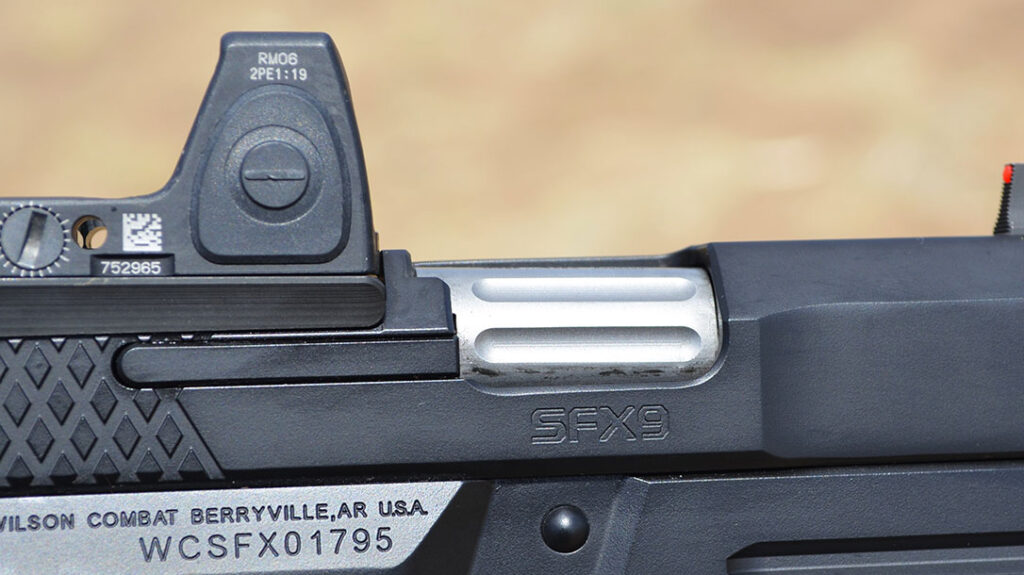
One design feature I really didn’t discover until I made a speed reload is the magwell funnel. Wilson designed the frame to have an extension in the area of what we would normally consider the mainspring housing.
It is beveled and at an angle, so when the shooter performs a reload, they simply place the flat of the magazine against this extension and push the tapered, double-column magazine until it is seated. That’s an overly complex description of what is a simple and intuitive action.
Timeless Superiority
I spent 5 hours and 400 rounds with the Wilson Combat SFX9 Comp, but I wish I had more time to spend with it. It’s a gun so well-built that it is a pleasure to shoot. From its trigger to its accuracy to its flawless reliability, the SFX9 Comp is an exquisite example of what a 1911 should be!
Time marches on, and for a species to survive, it must adapt. In a world awash with polymer, striker-fired defense pistols, the Wilson Combat SFX9 Comp stands out as the logical evolution of the 1911 platform. I’d like to think John Moses Browning would be happy with what Bill Wilson did.
For more information, please visit WilsonCombat.com.
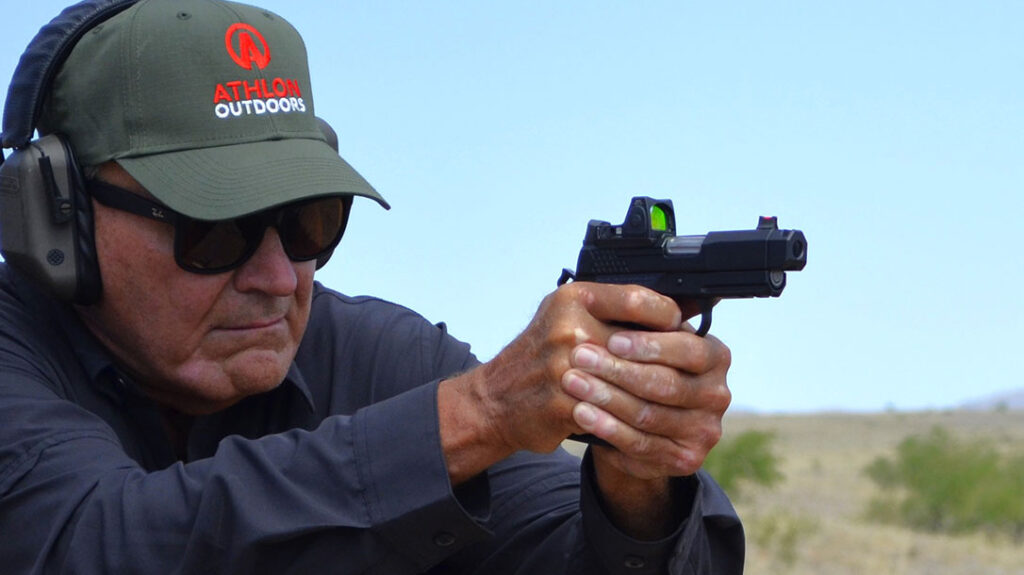
Wilson Combat SFX9 Comp Specs
| Caliber/Capacity | 9mm/ 15 + 1 |
| Overall Length | 6.75” |
| Height | 5.25” |
| Weight (Unloaded) | 26.9 Ounces |
| Frame | T6-7075 Aluminum with X-Tac Texturing |
| Slide | Stainless Steel Tri-Top Slide with External Extractor |
| Barrel/Compensator | 3.25” Stainless-Steel, 2-Port Compensator |
| Safety | Strong Side Extended Thumb Safety |
| Finish | Satin Black Armor-Tuff |
| Starting Price | $3,147 Compensator Barrel Upgrade=$257.95 Optic Cut Upgrade=$232.90 Optic= $566.95 |
Performance
| Ammo | Velocity | Energy | Group |
| Wilson Combat Remanufactured 135-grain HBFN | 902 | 243 | .90” |
| Wilson Combat 124-grain XTP Hollow Point +P High Performance Tactical | 1095 | 330 | .68” |
| Wilson Combat 115-grain Tac-XP +P Optimized for Compacts | 1054 | 283 | .82” |
| Wilson Combat 147-grain XTP Hollow Point Sub Sonic | 904 | 266 | 1.06” |
| Lehigh Defense 90-grain XD | 1283 | 329 | 1.70” |
| Lehigh Defense 115-grain XP Low Recoil | 1026 | 268 | 1.55” |
| Average | 1.12” |

